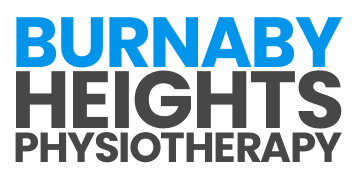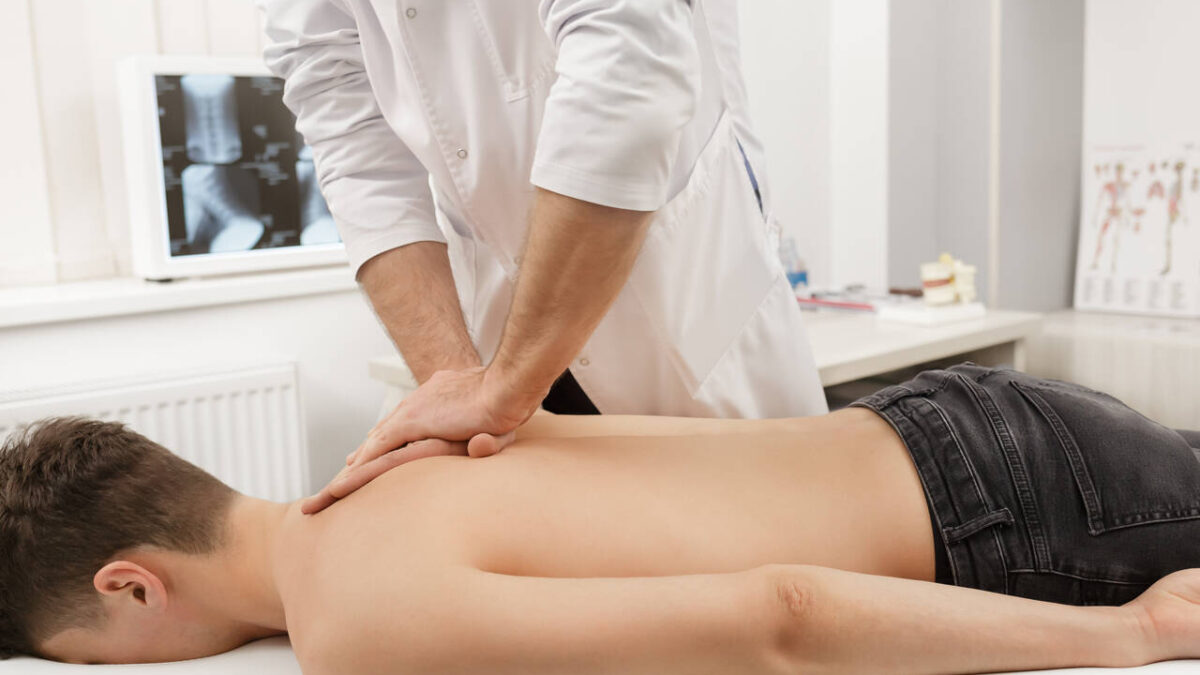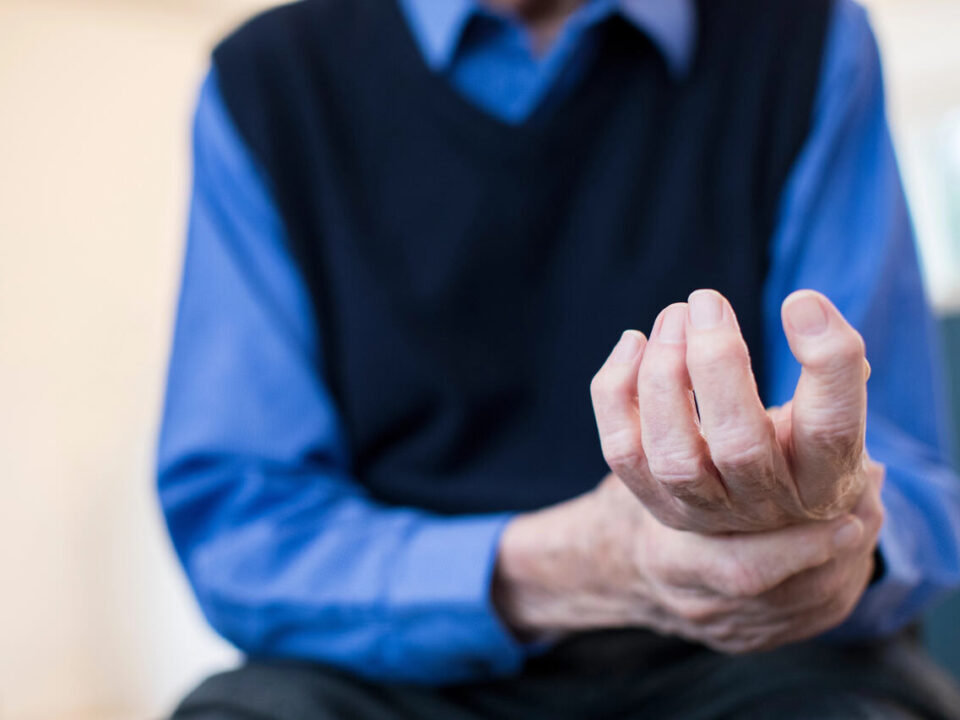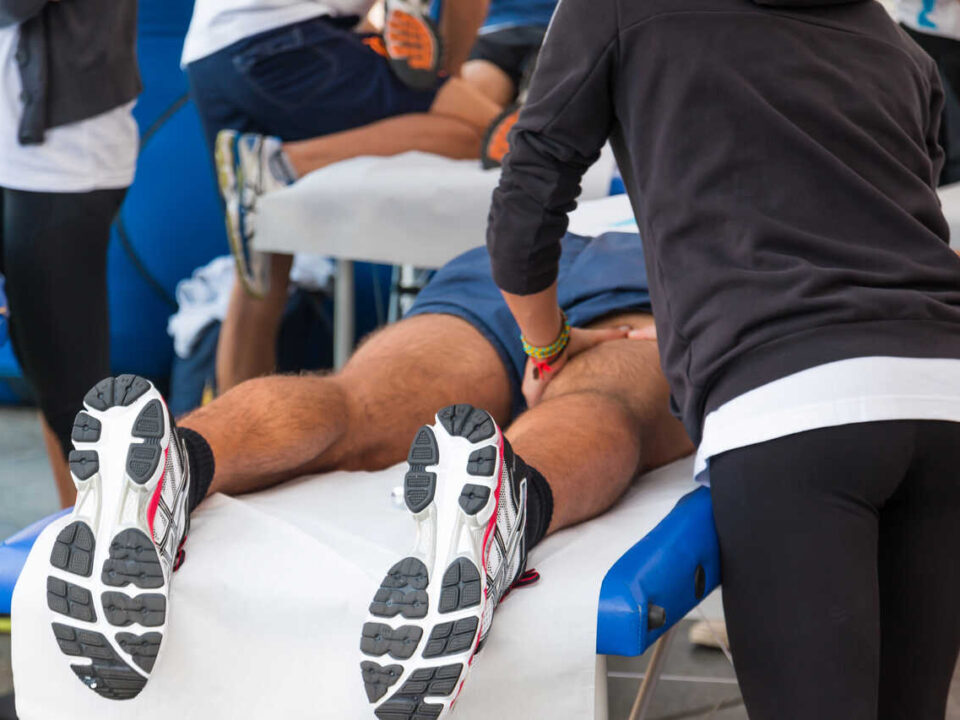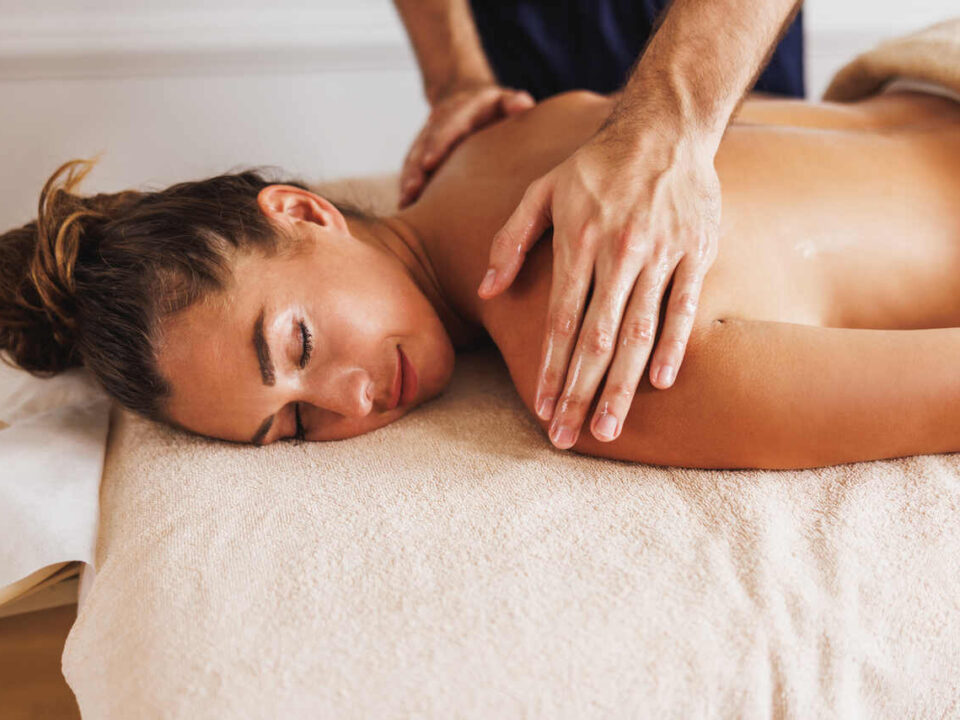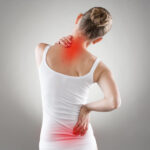
Breaking Free: Unleashing the Potential of Massage Therapy for Fibromyalgia
July 18, 2024
Rediscover Freedom: Embrace the Healing Touch of Rehabilitative Massage Therapy
July 18, 2024The Art of Massage Therapy
Benefits of Massage Therapy
Massage therapy offers a range of benefits that can enhance your physical and mental well-being. Understanding these advantages can help you appreciate the transformative power of this practice.
- Pain Relief: One of the primary benefits of massage therapy is pain relief. Techniques like deep tissue massage can alleviate chronic pain conditions such as back pain and arthritis.
- Stress Reduction: Massage therapy promotes relaxation by reducing stress hormones and encouraging a state of calm. This is particularly beneficial for individuals dealing with anxiety or high stress levels.
- Improved Circulation: Techniques like Swedish massage can enhance blood flow, which helps in delivering oxygen and nutrients to your muscles and organs.
- Enhanced Flexibility: Regular massage can improve your range of motion and flexibility, making it an excellent option for athletes or individuals recovering from injuries.
- Mental Clarity: Beyond physical benefits, massage therapy can also improve mental focus and clarity by reducing stress and promoting a sense of well-being.
For more detailed information on the benefits of massage therapy, you can visit our article on massage therapy benefits.
Importance of Mastering Techniques
Mastering massage therapy techniques is essential to unlock the full potential of this therapeutic practice. Whether you’re a seasoned therapist or a beginner, honing your skills can significantly impact the effectiveness of your treatments.
- Client Satisfaction: Proficiency in various massage therapy techniques ensures that you can cater to the specific needs of your clients. Whether it’s sports massage therapy for athletes or massage therapy for seniors, mastering different techniques can enhance client satisfaction.
- Injury Prevention: Proper technique minimizes the risk of injury to both you and your clients. Understanding the correct methods for applying pressure and manipulating muscles ensures a safe and effective session.
- Therapeutic Benefits: Each technique offers unique therapeutic benefits. For instance, trigger point therapy targets specific areas of muscle tension, while lymphatic drainage massage promotes detoxification. Mastery of these techniques allows you to deliver targeted treatments.
- Professional Growth: Continuous learning and mastery of new techniques can enhance your professional development. Attending workshops and courses can keep you updated with the latest advancements in the field.
To learn more about specific massage techniques and their benefits, explore our articles on therapeutic massage therapy and rehabilitative massage therapy.
By mastering the art of massage therapy, you can provide exceptional service and unlock the numerous benefits for your clients.
Understanding Massage Therapy Techniques
Exploring various massage therapy techniques can help you find the best method to meet your needs. Here, we delve into three popular techniques: Swedish massage, deep tissue massage, and sports massage.
Swedish Massage
Swedish massage is one of the most common and widely practiced forms of massage therapy. This technique focuses on relaxing the entire body by rubbing the muscles with long gliding strokes in the direction of blood returning to the heart. It is an excellent choice for anyone new to massage therapy.
Key benefits of Swedish massage include:
- Improved circulation
- Reduced muscle tension
- Enhanced relaxation
- Lowered stress levels
For more details on the benefits of this technique, visit our article on Swedish massage therapy.
| Technique | Primary Benefit | Typical Duration |
|---|---|---|
| Effleurage | Relaxation | 5-10 mins |
| Petrissage | Muscle relaxation | 10-15 mins |
| Friction | Increased circulation | 5-10 mins |
| Tapotement | Stimulated nerves | 3-5 mins |
Deep Tissue Massage
Deep tissue massage targets the deeper layers of muscle and connective tissue. This technique is particularly effective for chronic aches and pains and contracted areas such as a stiff neck, upper back, lower back pain, leg muscle tightness, and sore shoulders.
Key benefits of deep tissue massage include:
- Alleviated chronic pain
- Reduced inflammation
- Improved muscle rehabilitation
- Enhanced range of motion
Be sure to check out our article on deep tissue massage therapy for a more comprehensive understanding.
| Technique | Primary Benefit | Typical Duration |
|---|---|---|
| Stripping | Muscle fiber realignment | 10-20 mins |
| Friction | Break down scar tissue | 5-10 mins |
| Myofascial Release | Improved flexibility | 10-15 mins |
Sports Massage
Sports massage is designed specifically for athletes or individuals involved in physical activities. This technique focuses on preventing and treating injury and enhancing athletic performance. It combines various massage techniques to address specific muscle groups used in a particular sport.
Key benefits of sports massage include:
- Reduced muscle soreness
- Enhanced flexibility
- Improved range of motion
- Faster recovery from injury
For more insights on this technique, visit our article on sports massage therapy.
| Technique | Primary Benefit | Typical Duration |
|---|---|---|
| Pre-event | Increased circulation | 10-15 mins |
| Post-event | Reduced muscle soreness | 15-20 mins |
| Maintenance | Injury prevention | 20-30 mins |
| Rehabilitation | Recovery support | 20-30 mins |
Understanding these techniques can help you choose the right type of massage to meet your specific needs. Whether you’re looking for relaxation, pain relief, or athletic performance enhancement, these methods offer various benefits. Explore more about different types of massage therapy to find the best fit for you.
Specialized Techniques
Specialized massage therapy techniques can address specific issues and enhance the overall effectiveness of your treatment. Here, we explore three key specialized methods: Trigger Point Therapy, Myofascial Release, and Reflexology.
Trigger Point Therapy
Trigger Point Therapy focuses on identifying and releasing tight areas within muscle tissue known as trigger points. These can cause pain in other parts of the body, known as referred pain. By applying targeted pressure to these points, you can alleviate pain and improve muscle function.
| Technique | Pressure Level | Common Areas Treated |
|---|---|---|
| Trigger Point Therapy | Moderate to Firm | Shoulders, Neck, Back |
Trigger Point Therapy is particularly effective for conditions like carpal tunnel syndrome and migraines, offering relief by addressing the root cause of the pain.
Myofascial Release
Myofascial Release aims to relieve tension in the fascia, a connective tissue that surrounds muscles. This technique involves applying gentle, sustained pressure to the fascia, which helps to release tension and improve flexibility.
| Technique | Pressure Level | Common Areas Treated |
|---|---|---|
| Myofascial Release | Gentle to Moderate | Entire Body |
This method is beneficial for treating conditions like fibromyalgia and chronic pain, making it a versatile tool in your therapeutic arsenal.
Reflexology
Reflexology is based on the principle that specific points on the feet, hands, and ears correspond to different organs and systems in the body. By applying pressure to these points, you can promote overall health and well-being.
| Technique | Pressure Level | Common Areas Treated |
|---|---|---|
| Reflexology | Light to Moderate | Feet, Hands, Ears |
Reflexology can be particularly helpful for conditions like arthritis and back pain, offering a holistic approach to healing.
These specialized techniques can significantly enhance the effectiveness of your therapeutic massage therapy treatments. Understanding and mastering these methods will allow you to provide more targeted and effective care for your clients.
Enhancing Your Skills
Improving your skills as a massage therapist involves focusing on several key areas. This will not only help you deliver better service but also ensure your own well-being and professional growth.
Proper Body Mechanics
Maintaining proper body mechanics is crucial for preventing injury and ensuring longevity in your career. By using the right techniques, you can minimize strain on your body and deliver more effective treatments.
- Posture: Keep your spine aligned and avoid hunching over.
- Weight Distribution: Use your body weight rather than just your hands to apply pressure.
- Stance: Adopt a stable stance, often referred to as the “lunge” or “warrior” stance.
| Technique | Description |
|---|---|
| Posture | Keep your spine straight and aligned. |
| Weight Distribution | Use your body weight to apply pressure, not just your hands. |
| Stance | Use a stable stance like the “lunge” or “warrior” stance. |
Communication with Clients
Effective communication with your clients is essential for understanding their needs and providing personalized treatments. This includes both verbal and non-verbal communication.
- Initial Consultation: Start with a comprehensive consultation to understand the client’s health history and specific needs.
- Feedback During Session: Encourage clients to provide feedback during the session to adjust pressure and techniques as needed.
- Post-Session Discussion: Discuss the session afterward to provide recommendations and receive feedback.
For more on how to tailor your sessions to different needs, check out our articles on massage therapy for back pain and massage therapy for carpal tunnel syndrome.
Continuing Education
Staying updated with the latest techniques and trends in massage therapy is crucial for professional development. Continuing education ensures that you can offer a wide range of services and stay competitive in the field.
- Workshops and Seminars: Attend workshops and seminars to learn new techniques and approaches.
- Online Courses: Enroll in online courses for flexibility and convenience.
- Certifications: Obtain certifications in specialized areas like trigger point therapy massage or lymphatic drainage massage therapy.
| Education Type | Benefits |
|---|---|
| Workshops & Seminars | Hands-on experience and networking opportunities. |
| Online Courses | Flexibility and convenience to learn at your own pace. |
| Certifications | Specialized knowledge and increased credibility. |
By focusing on these areas, you can enhance your skills and provide a better experience for your clients. For more information on the benefits of various massage techniques, visit our articles on massage therapy benefits and types of massage therapy.
Creating a Relaxing Environment
Creating a relaxing environment is essential for effective massage therapy. It helps your clients feel comfortable and enhances their overall experience. Let’s explore the key aspects of setting the mood, choosing the right oils and lotions, and using props and equipment.
Setting the Mood
The right atmosphere can significantly impact the effectiveness of your massage therapy. Consider the following elements to set the perfect mood:
- Lighting: Soft, dim lighting can help your clients relax. Use lamps with adjustable brightness or candles to create a tranquil ambiance.
- Music: Gentle, soothing music can enhance relaxation. Instrumental tracks or nature sounds are ideal choices.
- Temperature: Ensure the room is at a comfortable temperature. Too hot or too cold can distract from the therapy session.
- Aromatherapy: Incorporate essential oils like lavender or eucalyptus to create a calming environment. Use an oil diffuser for a subtle, consistent aroma.
Choosing the Right Oils and Lotions
Selecting the appropriate oils and lotions is crucial for a successful massage session. These products not only facilitate smooth movements but also provide additional therapeutic benefits. Here are some options to consider:
| Product Type | Benefits |
|---|---|
| Carrier Oils | Moisturize the skin, provide a base for essential oils. Examples: Coconut oil, Jojoba oil. |
| Essential Oils | Offer various therapeutic properties. Examples: Lavender for relaxation, Peppermint for muscle relief. |
| Lotions and Creams | Provide a non-greasy option, suitable for clients with oily skin. Examples: Aloe vera-based lotions. |
For more details on the benefits of different oils, visit our article on massage therapy benefits.
Using Props and Equipment
Using the right props and equipment can enhance the effectiveness of your massage therapy techniques. Here are some essential items to consider:
- Massage Table: A sturdy, comfortable table with adjustable height is crucial. Ensure it has ample padding and a face cradle for client comfort.
- Bolsters and Pillows: These provide support and help maintain proper body alignment during the session. Use them under the knees, ankles, or neck as needed.
- Towels and Sheets: Keep a supply of clean, soft towels and sheets for draping and covering your clients. This promotes hygiene and comfort.
- Hot Stones: Incorporate hot stones for a warming, therapeutic effect. They can help relax muscles and improve blood circulation.
By carefully considering these elements, you can create a relaxing environment that enhances your massage therapy sessions. For more tips on various massage techniques, check out our articles on Swedish massage therapy and deep tissue massage therapy.
Practicing Self-Care
As a massage therapist, taking care of yourself is just as important as caring for your clients. Practicing self-care ensures that you can continue to provide top-notch services without compromising your own well-being.
Preventing Burnout
Burnout can be a significant issue in the massage therapy profession. To prevent it, it’s essential to recognize the signs early and implement strategies to manage stress and fatigue.
| Strategies to Prevent Burnout | Description |
|---|---|
| Regular Breaks | Taking short breaks between sessions to rest and recharge. |
| Setting Boundaries | Limiting the number of clients per day to avoid overexertion. |
| Mindfulness Practices | Incorporating activities such as meditation or yoga to reduce stress. |
| Support Systems | Engaging with peers or mentors for support and advice. |
Incorporating Self-Massage
Self-massage can be a valuable tool for alleviating your own muscle tension and maintaining your physical health. By applying the same techniques you use on clients to yourself, you can address areas of discomfort and prevent injuries.
Some self-massage techniques you might consider:
- Trigger Point Therapy: Use your fingers or a massage tool to apply pressure to specific points that are causing discomfort.
- Myofascial Release: Gently stretch and release the fascia using your hands or a foam roller.
- Reflexology: Apply pressure to specific points on your feet or hands that correspond to different areas of your body.
For more detailed techniques, refer to our guide on trigger point therapy massage.
Balancing Work and Personal Life
Maintaining a healthy work-life balance is crucial for overall well-being. By managing your time effectively and setting priorities, you can ensure that you have time for both your professional responsibilities and personal interests.
| Tips for Balancing Work and Personal Life | Description |
|---|---|
| Time Management | Use a planner or scheduling app to organize your day and allocate time for personal activities. |
| Prioritizing Tasks | Focus on high-priority tasks first and delegate or postpone less critical ones. |
| Leisure Activities | Make time for hobbies, exercise, and socializing to relax and unwind. |
| Professional Development | Allocate time for continuing education to stay updated on massage therapy techniques and enhance your skills. |
By integrating these self-care practices into your routine, you can sustain your passion for massage therapy and continue to provide exceptional care to your clients. For more information on different massage methods, explore our articles on swedish massage therapy and deep tissue massage therapy.


